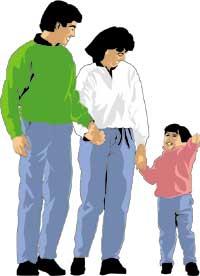In winter you also have to take care of

Any physical or metabolic activity that takes place in the body, that is, an internal process such as exercise or digestion, produces a generation or continuous loss of heat, processes that are essential to keep the temperature stable. When it is very hot, either because of the increase of the outside temperature or the increase of our temperature, for any reason, the body starts cooling mechanisms, among which the sweating stands out, among which the reduction of the heat produced by the body when sweating.

When it is cold, the process is reverse: it increases heat generation or decreases heat loss to keep the temperature constant, that is, to the extent suitable for binary functions. How does heat generation increase? For exercising, or through muscle contractions not controlled by the will, such as tremors, with which the body faces the outside cold. At the same time, the capillary network is tightened to prevent body temperature from decreasing, resulting in skinning and cooling.
Cold, dangerous to health?

Some sports such as ice skating or skating or mountaineering (especially in high altitude mountains) are done in cold conditions. Other sports, such as cycling, jogging or soccer, get very hard during the winter with weather conditions. And body warming before exercise is even more important at this time of year, although proper warming is always recommended: the muscle responds better when it is hot. When the body is cold, if it has not been prepared previously without proper stretching exercise, in addition to yielding less and getting tired before, there is a higher risk of injury. And this risk is even greater if that person only sporadically practices sports or physical exercise.
It has been shown, for example, that in the case of skiing, the most serious injuries usually come from fans who work a few weekends a year. And why? Probably because they do not take the necessary precautions in the cold.
In addition to the influence it can have on physical performance, and despite the problems that can lead to poor muscle heating, cold can be dangerous in itself for the health of many athletes. And here we are not talking about catarros or light paintings, but more serious things. If the athlete suffers severe hypothermia (for example, in the case of mountaineers it is usually at very low temperatures for several hours), death may occur as a final consequence.
All these problems, of course, can be prevented by taking appropriate measures to protect the body from the cold. And protective measures should be more severe in the case of people with illnesses that aggravate the cold: hypertensive, suffering from Raynaub’s disease (or so-called “white finger syndrome”), or arteriosclerosis, since cold can cause spasms of the arteries.
Tips for better care
Warm up well before starting exercise

Depending on age, fitness, etc. of each one, but always before starting with
a serious athlete, it is necessary to perform warm-up exercises for five or ten minutes to fine-tune the muscles (it is essential to increase the temperature if the muscle responds well and without risk of injury).
Clothing is also important
Watch out for the clothing we wear: the one that protects us against cold (isolation), but the one that makes possible sweating or perspiration. If sweat is not expelled, sweating is less effective as a mechanism for regulating the temperature of the muscles, which can cause chills and scratches. Therefore,
comfortable and quiet clothes that are heated but leave the sweat out. On the other hand, clothing is not recommended; two or three well-placed pants are an optimal insulation against the cold. Cotton and polypropylene fabrics are very suitable.
Protect the body well

It is important to cover the head well, since the traffic in the head is very abundant, so you can lose a lot of heat. Therefore, in some cases wearing hats or the like may be necessary and almost mandatory. On the other hand, the fingers, ears, nose (and face in general) are the most sensitive to cold in the extremities. Therefore, they must be protected with protective creams, warm head, etc. Follow the weather forecasts on the mountain.
Beware of time
Cold wind increases body heat loss. When the wind blows, more clothes will be used. On the other hand, we also have to deal with hyperthermia. After exercise, and if the environment is cold, with rest can occur a hypothermia, since the heat generation goes down a lot with rest (if it does not disappear completely), while the heat loss remains very high. Therefore, at the end of the exercise you have to put more clothes.
The sun can also be dangerous

Some skins are very sensitive, they are easily reddened in the snow with the sun and for them there is nothing worse than to be out in the snow, than to pass quickly from cold to indoor heat (for example, to the very soft fire next to the fireplace): they will get reddish and feel itching. The solution for these skins consists of creams with a total protection factor to provide some flexibility to fragile and extended blood vessels.
In the snow the sun may sound very good, until it gives color to the skin in a very short time, but due to the height it also has risks: With 1,500 meters of rise, the power of solar radiation also increases by 20% and the snow itself reflects 80% of the solar rays (sea water 5%, or the remains, even if white, only reflect 15-20%). With the Sun, therefore! !





